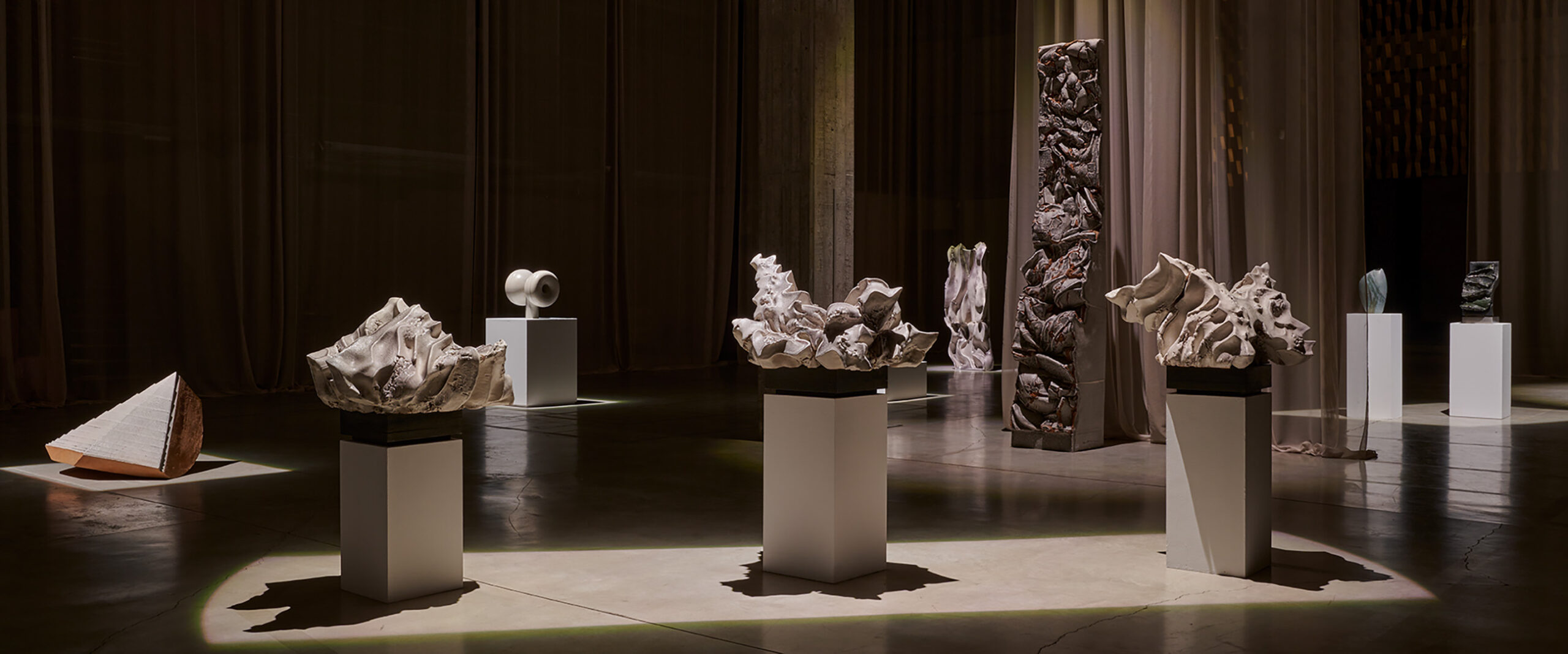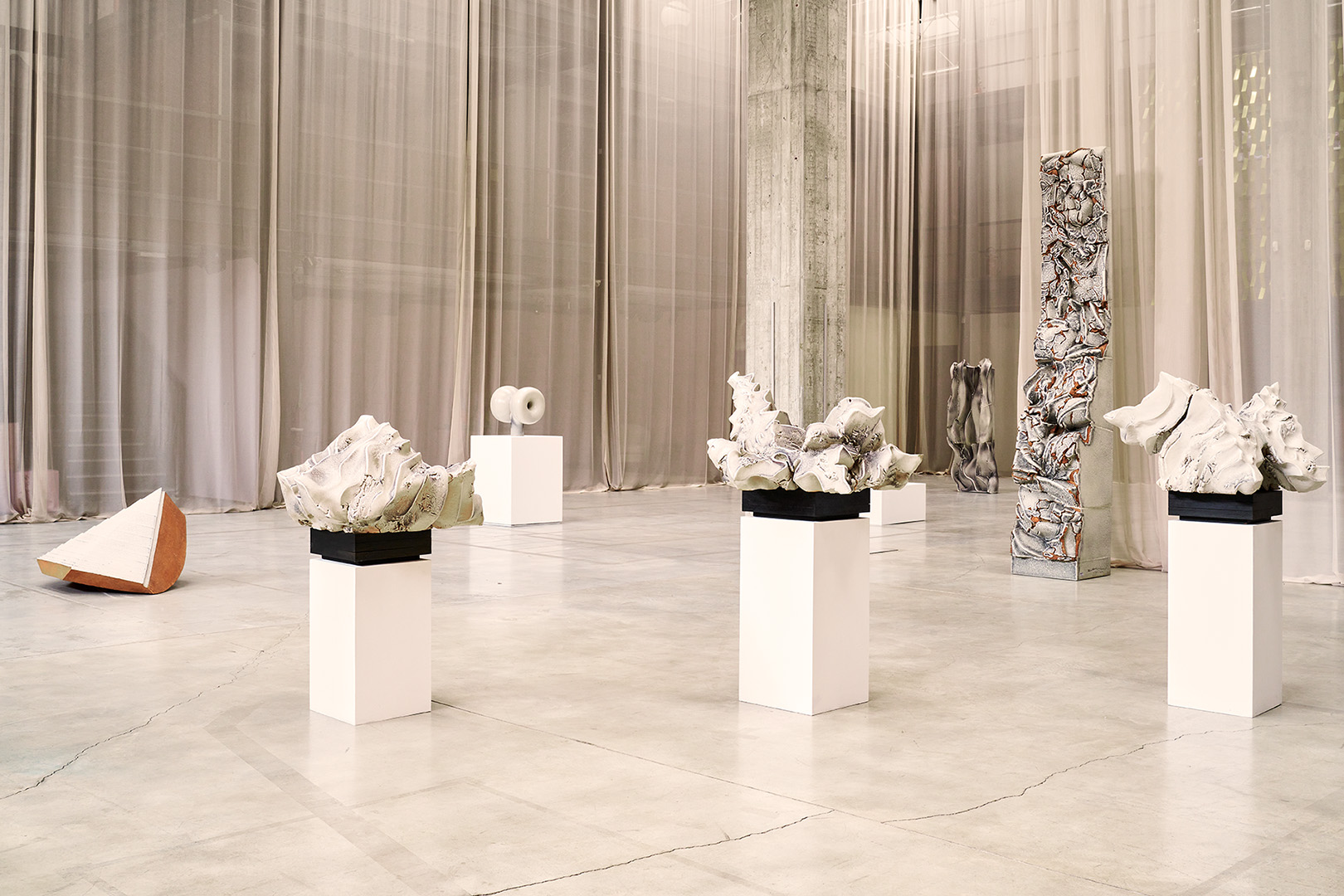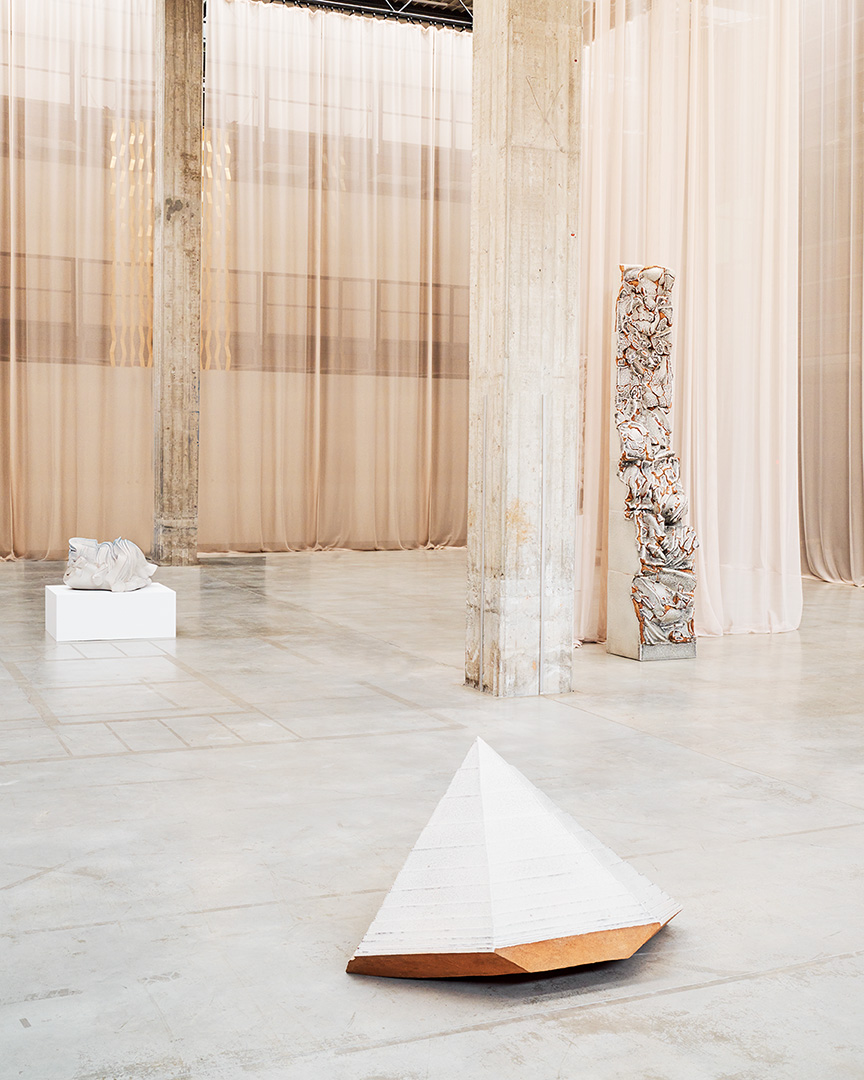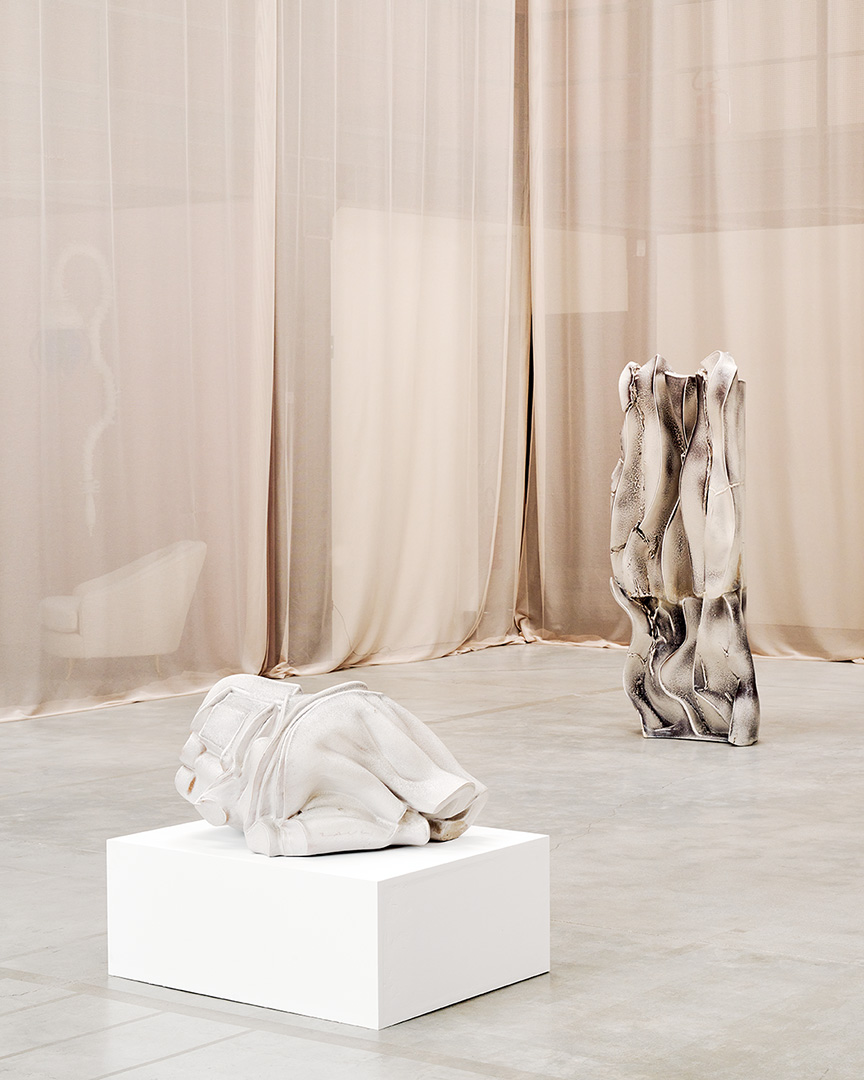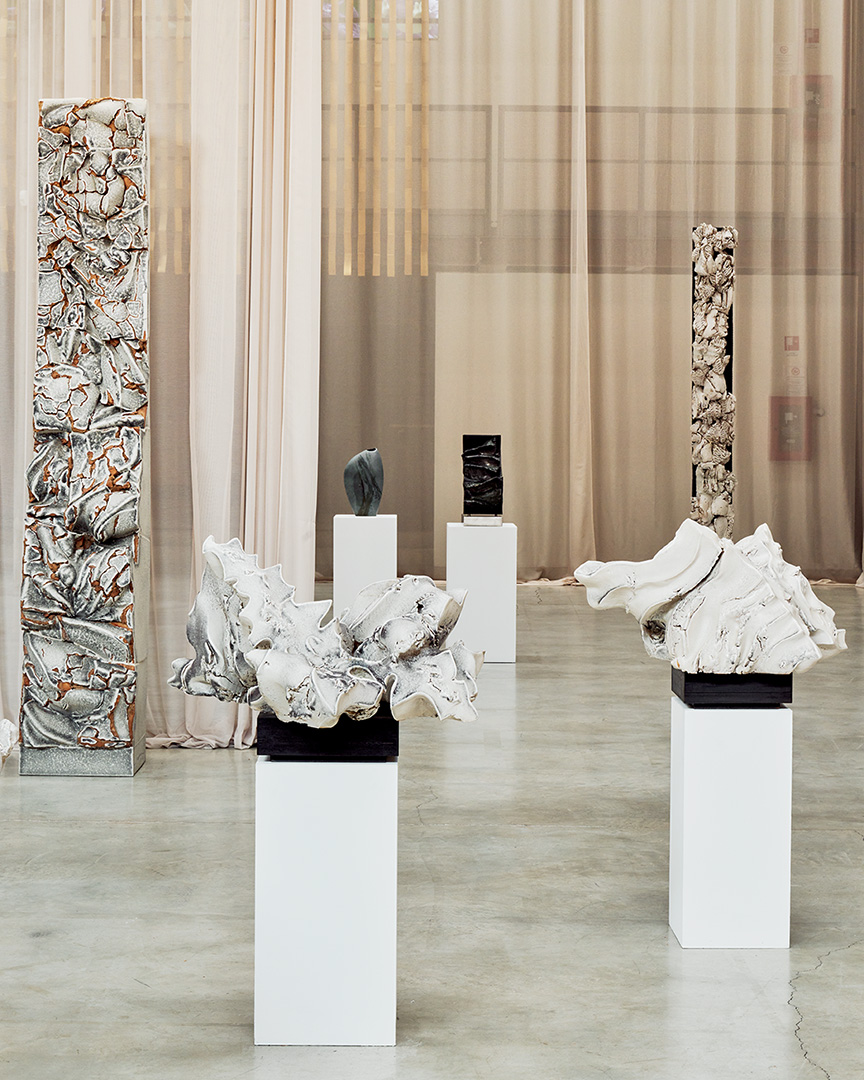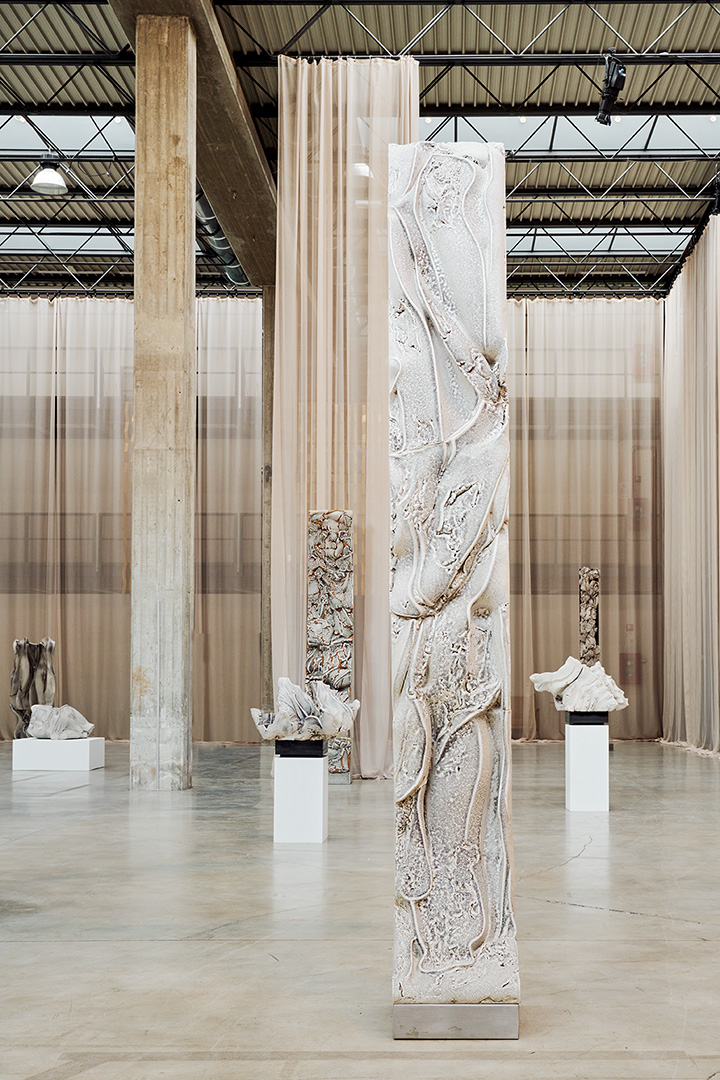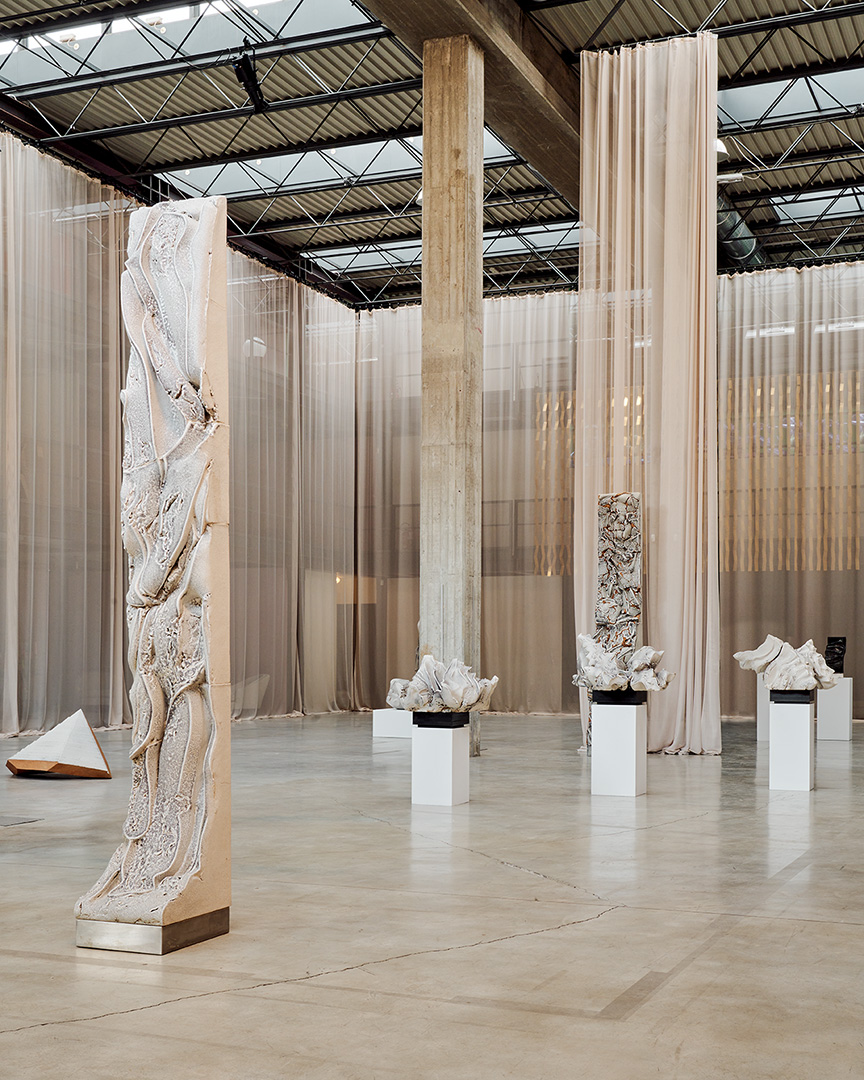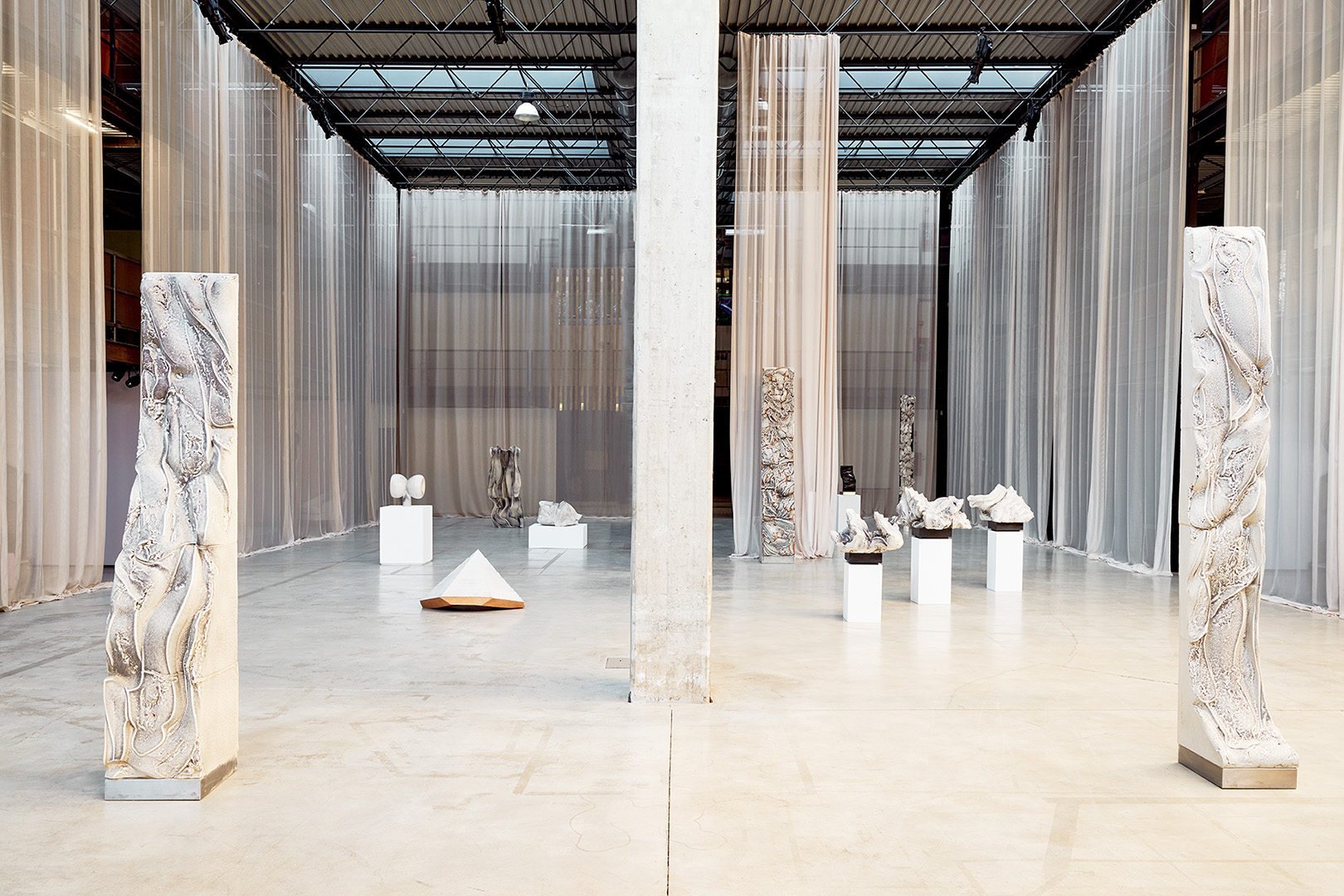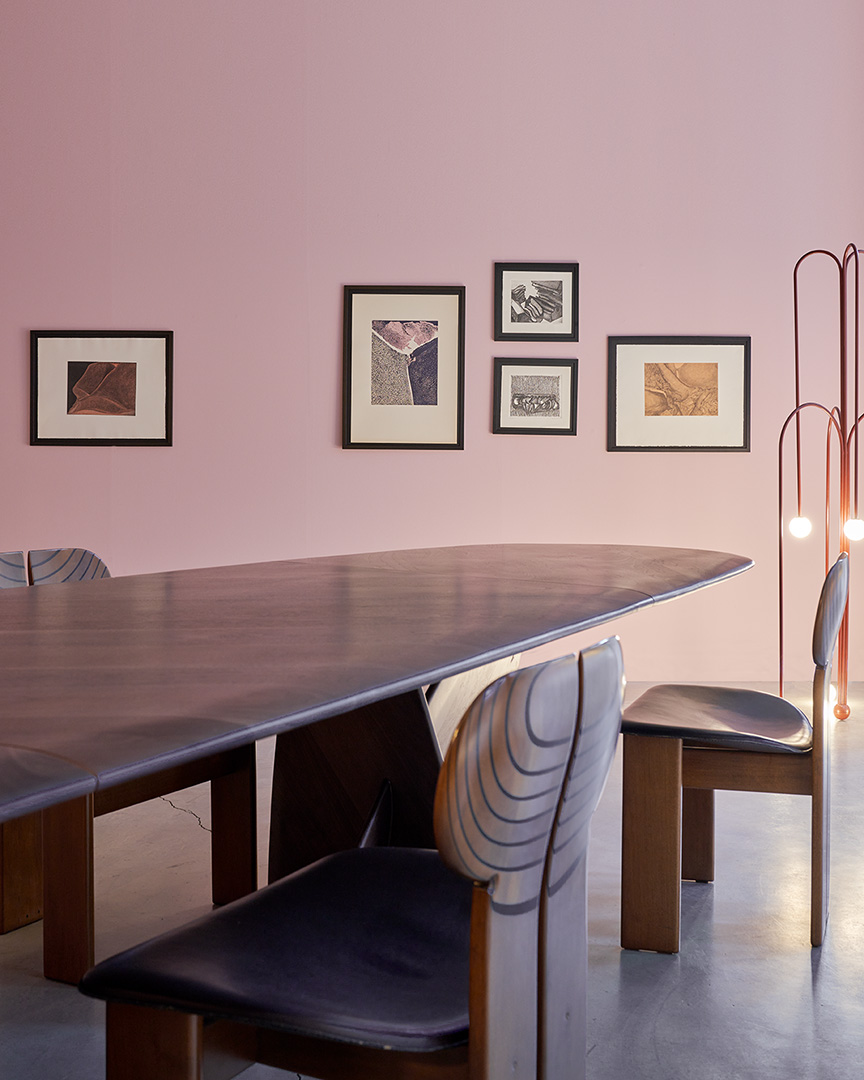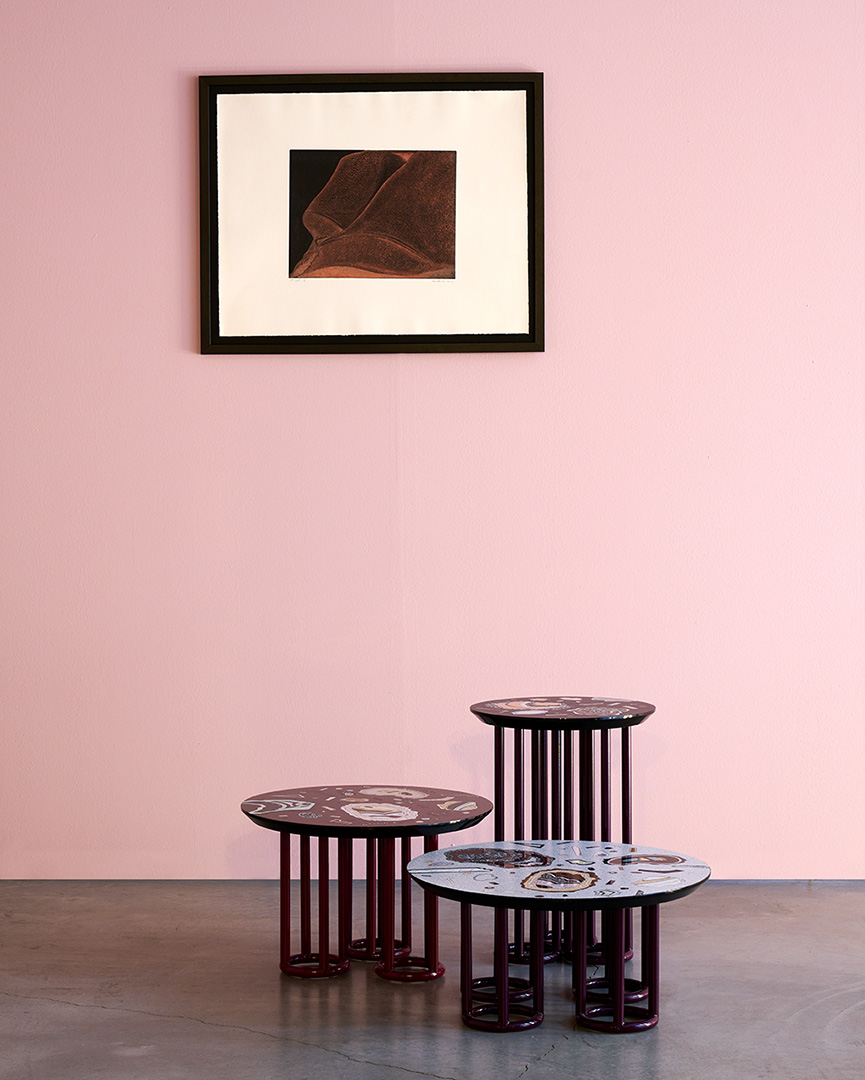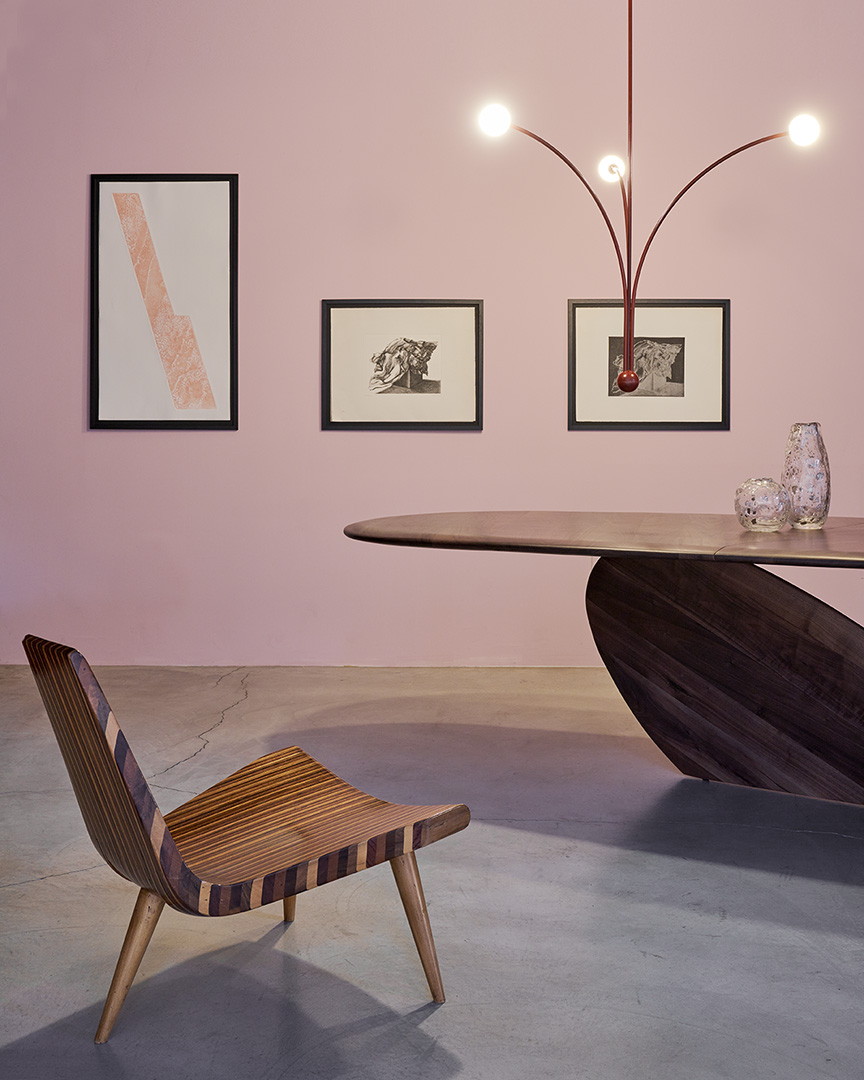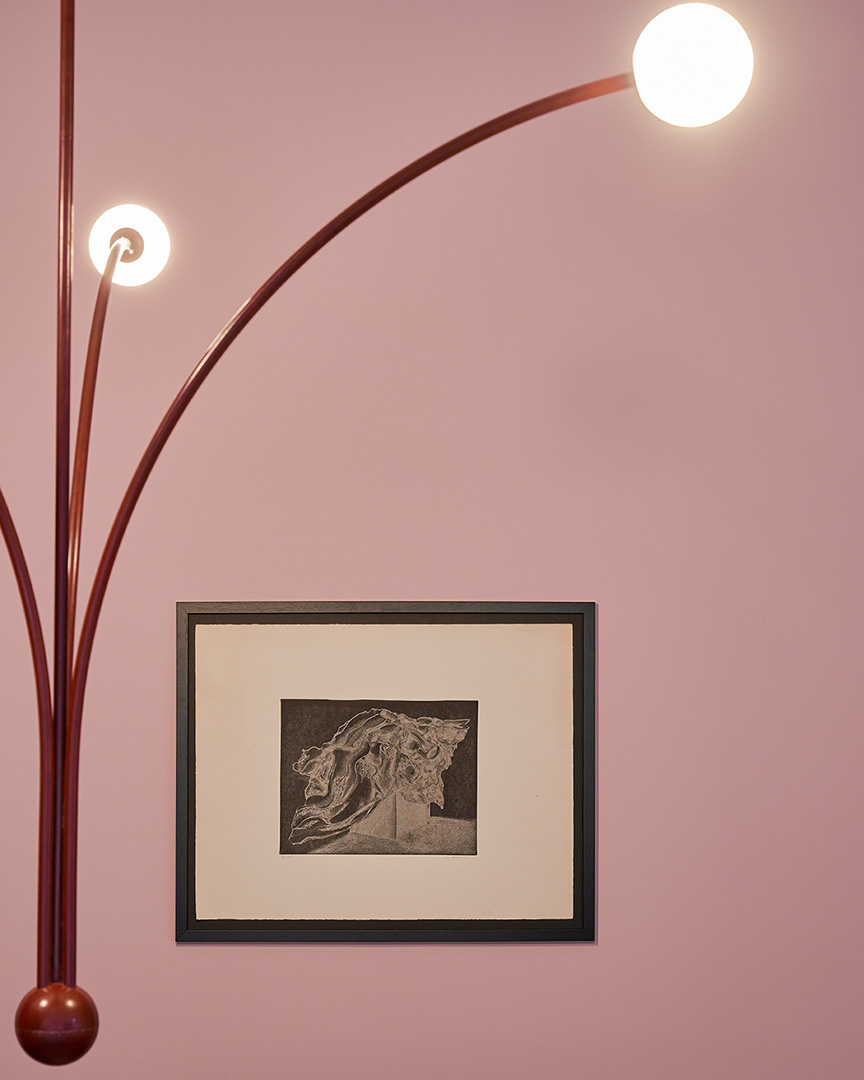AN EXHIBITION DEDICATED TO THE GIFTED CERAMIC ARTIST
Nilufar is proud to present the “Carlo Zauli” exhibition dedicated to the Italian ceramist and sculptor and which is hosted in the central space at Nilufar Depot in Viale Lancetti 34. Nina Yashar, working in collaboration with the Carlo Zauli Museum, has curated a selection of works that trace the most representative sculptural periods of Zauli’s career, from the best-known moments to some never before seen by the public. This important initiative celebrates the art of Zauli, one of the great innovators and champions of ceramic art in the 20th century. As seen before on the occasion of the exhibition in 2021 dedicated to sculptor Pietro Consagra, this event highlights the fundamental role Nilufar plays as a cultural promoter of monothematic exhibitions that trace the careers of respected artists from the fields of art and design. The exhibitions in the gallery reflect the careful, curatorial selection and impeccable taste of Nina Yashar, founder of Nilufar.
The displayed works include particularly rare pieces from Zauli’s private collection and chronicle his sculptural period that starts in the 1950s, when the artist was at the beginning of his career, and which extends into the 1980s. The exhibit provides an important opportunity to celebrate and promote the work of the artist and the Carlo Zauli Museum, which his family opened in Faenza in 2002 inside his first studio space. This is the first-ever exhibition by a prominent gallery to dedicate space for an in-depth reflection of Zauli’s work. “Rarely is there such an intimate relationship between material and artist; Carlo Zauli’s dedication to working with ceramics emerges in the majestic and almost human quality of his works, which seem to live off their own energy. I am happy to pay homage to this great artist in our spaces in Viale Lancetti,” explains Nilufar’s Nina Yashar.
Among the exhibited works is a precious vase-sculpture characterized by an abstract decoration that dates to the 1950s and involves a quick stroke application of a glaze (done by soaking a rag and splashing it on the work in an action sculpture technique). This work belongs to the first but already fruitful period of Zauli’s career during which he won numerous international awards. In fact, it was in this decade that Zauli went beyond ceramics and researched techniques for working with stoneware fired at 1,200 degrees with white glazes and which became the precursors of the famous ‘Bianchi di Zauli.’ Most of the works chosen by Nilufar for the exhibit date to the 1960s, when Zauli moved away from the tradition of Faenza majolica and dedicated himself to artistic sculpture.
This transition was the result of a formal and geometric synthesis of his previous work. After having refined the techniques of vitrified ceramics, the tactility of the material now became the primary focus. This is the period of ‘Bianco Zauli’ when the artist became known for having invented a new typology of color. “It is historically significant since we previously had gone from Renaissance hyper-decorativism to the whites of Faenza. The same path was also followed by Zauli, who abandoned hyper-decorative ceramics and invented a glazed color scheme with a formula that still remains a secret today,” explains Matteo Zauli, the artist’s son who now oversees the museum named after his father. This was the color tone that dominated the artist’s career and which allows this exhibition to stand out.
Of the works on display, which mostly date to the 1960s, one sees pieces dedicated to elementary geometry, such as the Pyramid, which refers to a prehistoric construction and represents mysterious elements present throughout the world. Other works, however, follow a trend where the artist is looking for the perfect form that bursts forth from nature, albeit sinuously. Zauli has always nurtured and demonstrated a strong respect for the natural world as well as a curiosity for its relationship with man. For this reason, he often mixes classical themes with naturalistic ones. Of particular interest is the section dedicated to the Steli, works that belong to the 60s and 70s (a period when Zauli developed and exhibited many of his works in Japan). There are elements with a tall, elongated shape inspired by the classicism of the sculptors of his generation, such as the Pomodoro brothers. The pottery is archaic, and the stele is the archaic form par excellence. For the first time in many years, Nilufar brings together these complex elements.
At a time when ceramics is riding a wave of popularity, Nilufar returns to the noble origins of this material to pay respects to the Italian artist who was best able to revive it in the last century.

